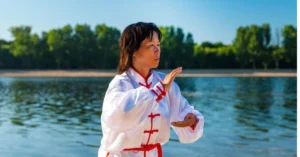Scarlett O’Hara is a name that resonates through the ages. This iconic character, born from Margaret Mitchell’s pen in “Gone with the Wind,” has captured hearts and sparked debates for decades. With her fierce determination and undeniable charm, she embodies both resilience and complexity.
Set against the backdrop of the American Civil War, Scarlett represents more than just a Southern belle; she symbolizes survival in tumultuous times. Her journey is one of love, loss, and relentless ambition—elements that make her an unforgettable figure in literature and film.
But what lies beneath this captivating persona? How have interpretations evolved over time? And how does Scarlett compare to other literary icons? Join us as we delve deep into her biography, character analysis, inspirations, adaptations—including those on screen—and much more. Prepare to explore all dimensions of this multifaceted character who continues to intrigue audiences around the world.
Biography of Scarlett O’Hara
Scarlett O’Hara, the unforgettable heroine of “Gone with the Wind,” was born in Georgia during the early 19th century. As the daughter of a wealthy plantation owner, she grew up surrounded by luxury and privilege. Her upbringing shaped her fierce personality and strong will.
At just sixteen, Scarlett’s beauty and charm captivated many suitors, but her heart belonged to Ashley Wilkes. This infatuation defined much of her early life. However, when Ashley marries another woman, Scarlett’s tenacity pushes her into a whirlwind of events that change everything.
As the Civil War unfolds around her, it tests Scarlett’s resolve like never before. Stripped of comforts and faced with unimaginable loss, she evolves from a naive girl into a resourceful survivor determined to reclaim what she’s lost. Her journey is marked by heartbreak but also reveals an unyielding spirit.
Scarlett’s character reflects not only personal struggles but also broader societal changes during this tumultuous period in American history. She remains an enduring symbol of resilience against all odds.
Character Analysis
Scarlett O’Hara is a complex and multifaceted character. Her fierce determination and tenacity make her stand out in the world of literature. From the very beginning, she displays a strong will to survive, often bending social norms to achieve her goals. This resilience makes her both relatable and frustrating.
Her romantic entanglements reveal much about her personality. Scarlett’s love for Ashley Wilkes seems idealistic at first, but it quickly becomes evident that it’s rooted in obsession rather than genuine affection. This misguided love shapes many of her decisions throughout the story.
Additionally, Scarlett’s relationships with other characters highlight different aspects of her character. For instance, her dynamic with Rhett Butler showcases vulnerability beneath her bravado. It’s here where readers can see how fiercely independent she is while also being deeply flawed.
Many interpretations view Scarlett as an embodiment of Southern femininity challenged by war and change. Her evolution reflects broader themes such as survival, identity crisis, and societal expectations during tumultuous times.
Common Interpretations
Scarlett O’Hara is a character rich with complexity, leading to a myriad of interpretations. Many readers view her as a symbol of resilience and determination. Despite facing numerous challenges during the Civil War era, Scarlett’s tenacity shines through. She embodies the struggle for survival in an ever-changing world.
Others see her as self-centered and manipulative. Her relationships often revolve around what she can gain rather than genuine connection or love. This perspective invites discussions about morality and ethical choices during turbulent times.
Scarlett’s evolution throughout “Gone with the Wind” prompts further analysis regarding personal growth versus selfishness. Some argue that her journey reflects a deeper understanding of sacrifice, while others claim it merely highlights her relentless pursuit of personal desires.
Interpretations vary widely based on individual values and experiences. Readers may empathize with different facets of Scarlett’s personality, making each encounter with her story unique and thought-provoking.
Comparisons with Other Characters
Scarlett O’Hara stands out vividly among literary characters, but comparing her to others reveals fascinating dynamics. Her tenacity and ambition can be contrasted with characters like Elizabeth Bennet from “Pride and Prejudice.” While both are strong-willed women, Scarlett often prioritizes survival over romantic ideals. This pragmatic approach highlights the harsh realities of her Southern upbringing.
Another compelling comparison is with Daisy Buchanan from “The Great Gatsby.” Both women navigate their desires within a patriarchal society, yet Scarlett’s resilience puts her in stark relief against Daisy’s passivity. Whereas Daisy dreams of escape without action, Scarlett fiercely seizes opportunities to shape her destiny.
Additionally, one can juxtapose Scarlett’s character arc with that of Jane Eyre. Jane embodies moral integrity and selflessness, while Scarlett’s selfishness drives much of the narrative conflict. These contrasting traits create rich discussions about femininity and agency in literature.
When compared to other iconic heroines like Katniss Everdeen from “The Hunger Games,” it becomes evident how different eras mold female strength—each defined by unique struggles and societal expectations.
Inspirations for Scarlett O’Hara
Scarlett O’Hara, the iconic character from Margaret Mitchell’s “Gone with the Wind,” draws inspiration from various sources. One significant influence was real-life Southern women of the Civil War era. Their resilience and determination shine through Scarlett’s complex personality.
Mitchell herself based Scarlett on a combination of historical figures and personal experiences. Stories shared by her family about strong-willed women in Georgia shaped Scarlet’s character traits, making her both relatable and extraordinary. The blend of myth and reality breathes life into this unforgettable heroine.
Additionally, literary influences played a role in crafting Scarlett. Characters from novels like “Pride and Prejudice” showcase similar themes of love, loss, and survival that resonate throughout Scarlett’s journey.
Southern culture contributed to shaping her identity. The traditions, customs, and societal pressures surrounding her provide depth to her struggles and ambitions as she navigates a rapidly changing world during tumultuous times.
1939 Film Adaptation
The 1939 film adaptation of “Gone with the Wind” is a cinematic milestone that brought Scarlett O’Hara to life for millions. Directed by Victor Fleming, it transformed Margaret Mitchell’s novel into an epic narrative filled with passion and drama. Vivien Leigh’s portrayal of Scarlett became iconic, capturing her fierce determination and complexity.
Casting choices were pivotal in shaping the film’s success. Leigh was not the initial choice; many names floated around before she was selected after a rigorous audition process. Her chemistry with Clark Gable, who played Rhett Butler, electrified audiences and added depth to their tumultuous relationship.
The film’s impact on popular culture cannot be overstated. Phrases like “Frankly, my dear, I don’t give a damn” entered everyday language due to its memorable dialogue. The lush cinematography and grand set designs created a lasting impression that resonates even today.
Scarlett’s character became an enduring symbol of resilience and survival against all odds within the context of historical upheaval. This adaptation solidified her place in American cultural history as more than just a fictional character but as an emblem of strength.
Casting Choices
Casting choices for Scarlett O’Hara in the 1939 film adaptation of “Gone with the Wind” remain iconic. The role was famously given to Vivien Leigh after an extensive search that included numerous actresses. Leigh’s audition captivated producer David O. Selznick, who saw in her a blend of beauty and complexity that matched Margaret Mitchell’s creation.
Leigh brought depth to Scarlett O’Hara, portraying her resilience and vulnerability. Her performance resonated deeply with audiences and critics alike. This casting choice transformed not only Leigh’s career but also set a benchmark for future portrayals of strong female characters in cinema.
The decision faced its share of controversy as well. Many thought other actresses were better suited for such a demanding role, including Bette Davis and Katharine Hepburn. However, it turned out that Selznick made the right call by choosing someone capable of delivering both charm and fierce determination.
Vivien Leigh’s portrayal became legendary, defining how generations would visualize Scarlett O’Hara long after the credits rolled on this classic film.
Impact on Popular Culture
Scarlett O’Hara has left an indelible mark on popular culture. Since her debut in “Gone with the Wind,” she has become a symbol of Southern charm and resilience. Her character embodies complexity, making her a topic of discussions in literature and film studies.
The iconic line “I’ll think about that tomorrow” is deeply ingrained in our collective consciousness. It reflects Scarlett’s determination to face challenges head-on while delaying emotional reckoning. This sentiment resonates with many, highlighting human vulnerability amidst strength.
Scarlett’s persona has also inspired countless parodies and references across various media platforms, from television shows to comic strips. Modern adaptations often draw upon her traits, showcasing how timeless her character truly is.
Fashion too felt the influence of Scarlett O’Hara, as designers have looked to her style for inspiration over the decades. The elaborate gowns worn by Vivien Leigh have sparked trends that echo through generations, solidifying Scarlett’s status as a cultural icon beyond literature and film.
Evolution of Scarlett O’Hara in Other Adaptations
Scarlett O’Hara has undergone significant transformations in various adaptations since her introduction in Margaret Mitchell’s “Gone with the Wind.” Each interpretation brings a unique perspective to her character, reflecting societal changes and evolving attitudes toward gender and race.
Television miniseries, stage productions, and even modern retellings have explored different facets of Scarlett’s personality. Some portrayals emphasize her resilience and cunning, while others highlight vulnerability and growth. These adaptations often reinterpret key moments from the original story to resonate with contemporary audiences.
Recent literature has also taken liberties with Scarlett’s narrative. Authors explore alternative histories or delve into backstories that offer deeper insights into her motivations. This evolution allows for engaging discussions about morality, ambition, love, and survival—elements central to Scarlett’s journey.
As new creators breathe life into this iconic character, they challenge perceptions established by earlier versions. This ongoing transformation keeps Scarlett relevant as she continues to captivate audiences across generations. The legacy of Scarlett O’Hara remains vibrant—a testament to the complexity of human emotions amid turbulent times.









